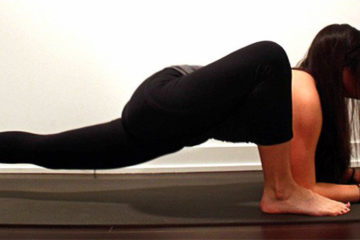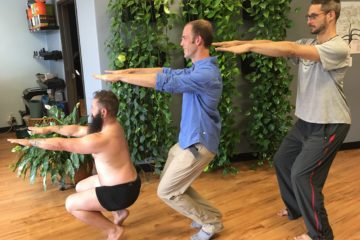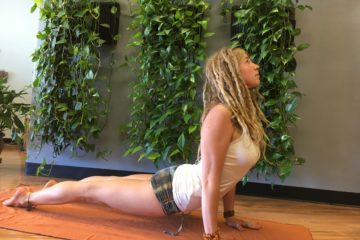The two names for the asana come from the Sanskrit words baka (“crane”) or kak (“crow”) and asana meaning “posture” or “seat”. While different yoga lineages use one name or another for the asana, Kakasana is cited as being with arms bent (like the shorter legs of a crow) and Bakasana with arms straight (like the longer legs of a crane). Bakasana is the foundation for a larger family of postures that include Parsva Bakasana (Side Crow) and two versions of Eka Pada Bakasana (One-Footed Crow).
Bakasana is iconic. For modern yoga practitioners, the pose not only represents strength, skill, and control, it symbolizes the entire concept of arm balancing. Practicing Bakasana builds self-confidence by reminding us that we’re stronger and more capable than we think.
The foundation of this pose is in your wrists and shoulders. It does take some time to build enough strength in those areas so make sure you listen to your body and don’t push yourself too fast. You don’t need super human strength to get into this pose, it’s more about how to shift your weight and when to engage the specific muscles required in the pose.
Pose Type:
Arm Balance
Benefits:
• Strengthens arms and wrists
• Stretches the upper back
• Strengthens the abdominal muscles
• Opens the groins
• Tones the abdominal organs
• Balance, concentration and coordination improve
Preparatory Poses:
Downward-Facing Dog; Butterfly; Childs Pose; Plank Pose; Hero Pose
Follow-up Poses:
Downward-Facing Dog; Chaturanga Dandasana; Plank Pose
Tips & Variations:
• Some students have a difficult time lifting into Bakasana from the floor. It’s often helpful to prepare for this pose squatting on a block or other height, so that your feet are a few inches off the floor
• The full pose sometimes causes varying degrees of pain in the wrists. Instead of spreading the fingers on the floor, curl them slightly. This should take some of the pressure off the wrists.
• Beginners tend to move into this pose by lifting their buttocks high away from their heels. In Bakasana try to keep yourself tucked tight, with the heels and buttocks close together. When you are ready to take the feet off the floor, push the upper arms against the shins and draw your inner groins deep into the pelvis to help you with the lift.
• You can use a partnering technique in Bakasana for better balance. Your partner can support you as you lean forward and lift your feet off the ground in this position.
• Bakasana is the foundation for a larger family of postures that include Parsva Bakasana (Side Crow) and two versions of Eka Pada Bakasana (One-Footed Crow).
Cautions:
• Carpal tunnel syndrome
• Current or chronic wrist pain
• Pregnancy
As with all postures, I encourage you to listen to your body and honor where you are mentally, physically and emotionally each day. The pose will be there again tomorrow… practice in such a way that you can be too!
Warmly,
Hollye and the SGY Teaching Team
– – – – –
“In order to see birds it is necessary to become a part of the silence.”
~ Robert Lynd


